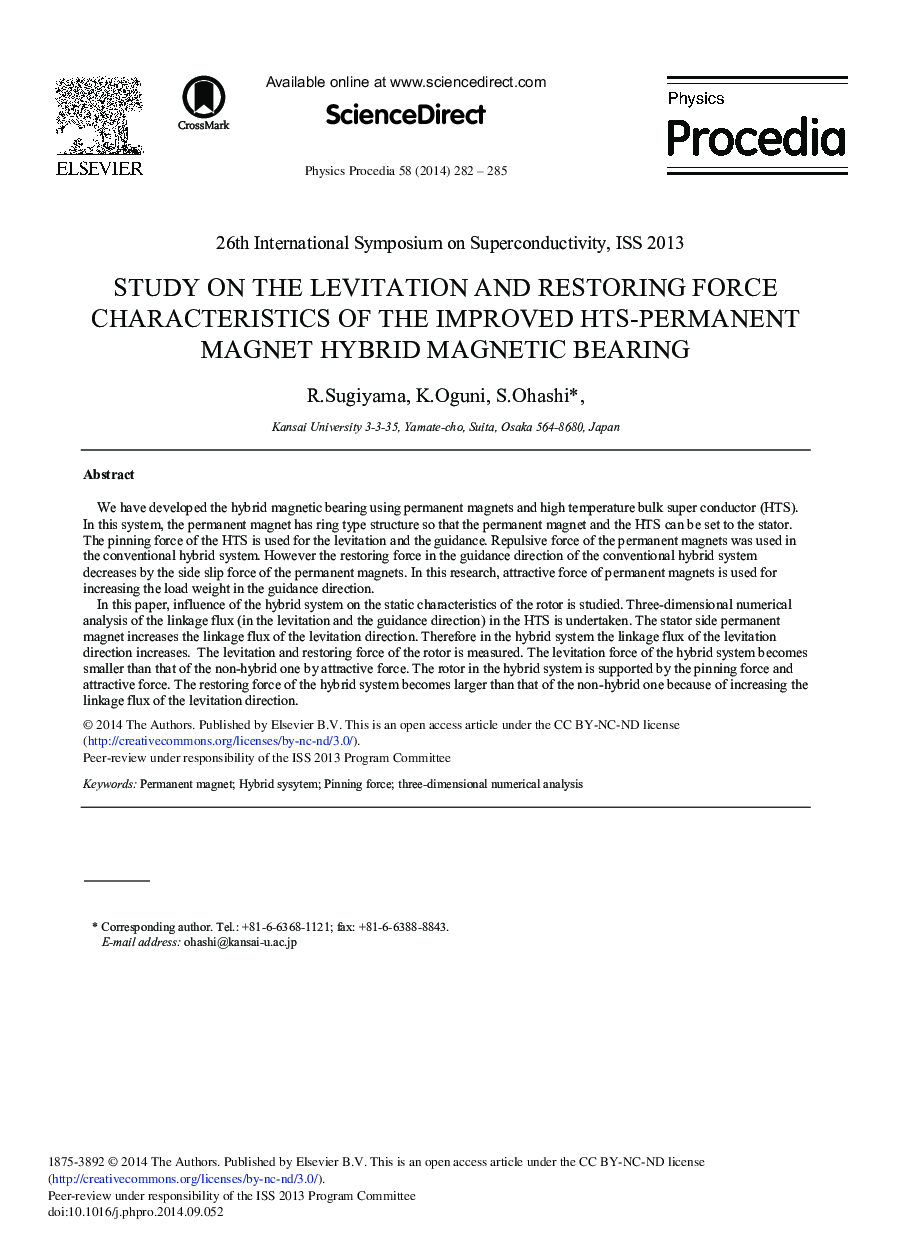| کد مقاله | کد نشریه | سال انتشار | مقاله انگلیسی | نسخه تمام متن |
|---|---|---|---|---|
| 1874604 | 1530966 | 2014 | 4 صفحه PDF | دانلود رایگان |

We have developed the hybrid magnetic bearing using permanent magnets and high temperature bulk super conductor (HTS). In this system, the permanent magnet has ring type structure so that the permanent magnet and the HTS can be set to the stator. The pinning force of the HTS is used for the levitation and the guidance. Repulsive force of the permanent magnets was used in the conventional hybrid system. However the restoring force in the guidance direction of the conventional hybrid system decreases by the side slip force of the permanent magnets. In this research, attractive force of permanent magnets is used for increasing the load weight in the guidance direction.In this paper, influence of the hybrid system on the static characteristics of the rotor is studied. Three-dimensional numerical analysis of the linkage flux (in the levitation and the guidance direction) in the HTS is undertaken. The stator side permanent magnet increases the linkage flux of the levitation direction. Therefore in the hybrid system the linkage flux of the levitation direction increases. The levitation and restoring force of the rotor is measured. The levitation force of the hybrid system becomes smaller than that of the non-hybrid one by attractive force. The rotor in the hybrid system is supported by the pinning force and attractive force. The restoring force of the hybrid system becomes larger than that of the non-hybrid one because of increasing the linkage flux of the levitation direction.
Journal: Physics Procedia - Volume 58, 2014, Pages 282-285